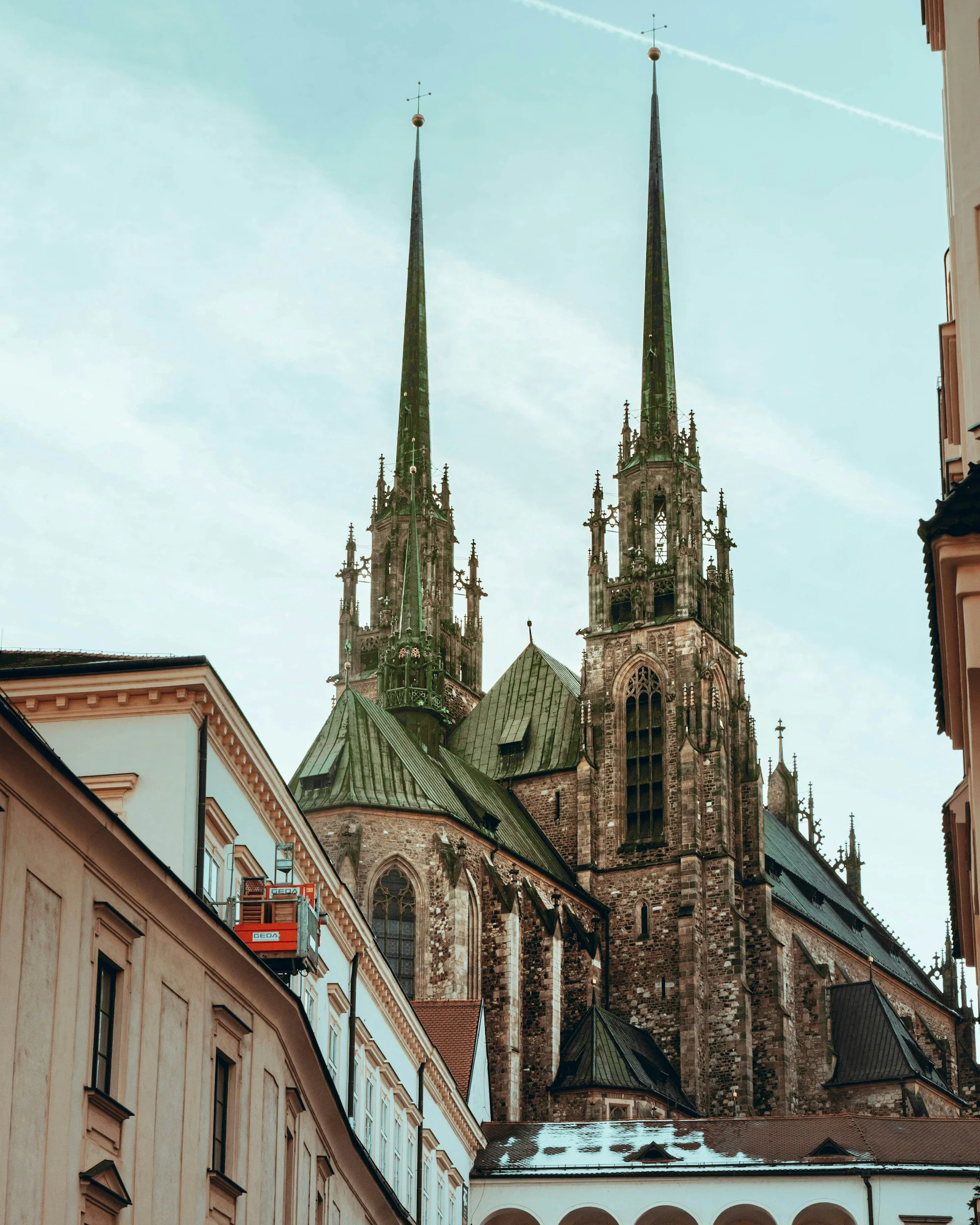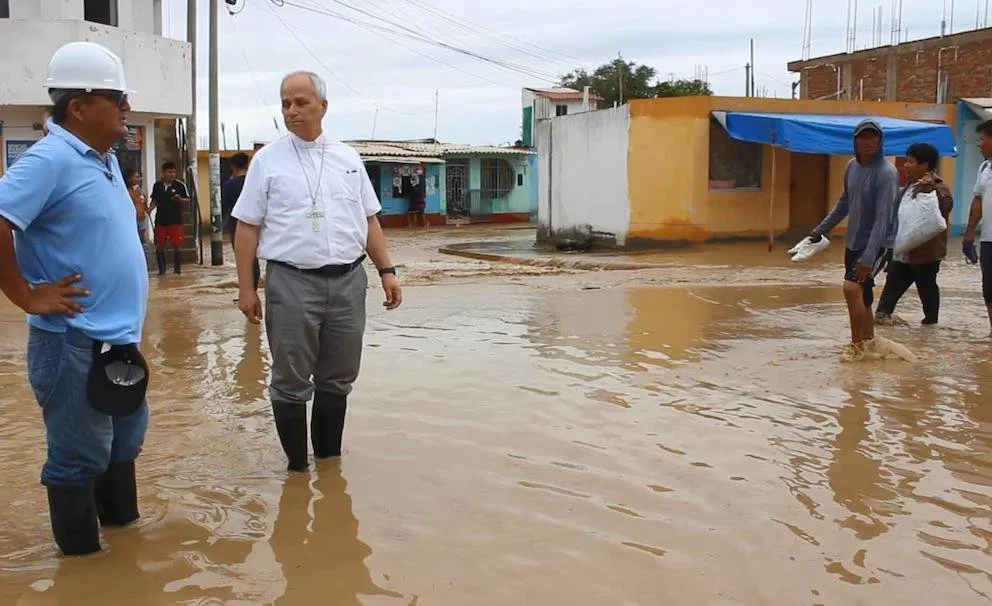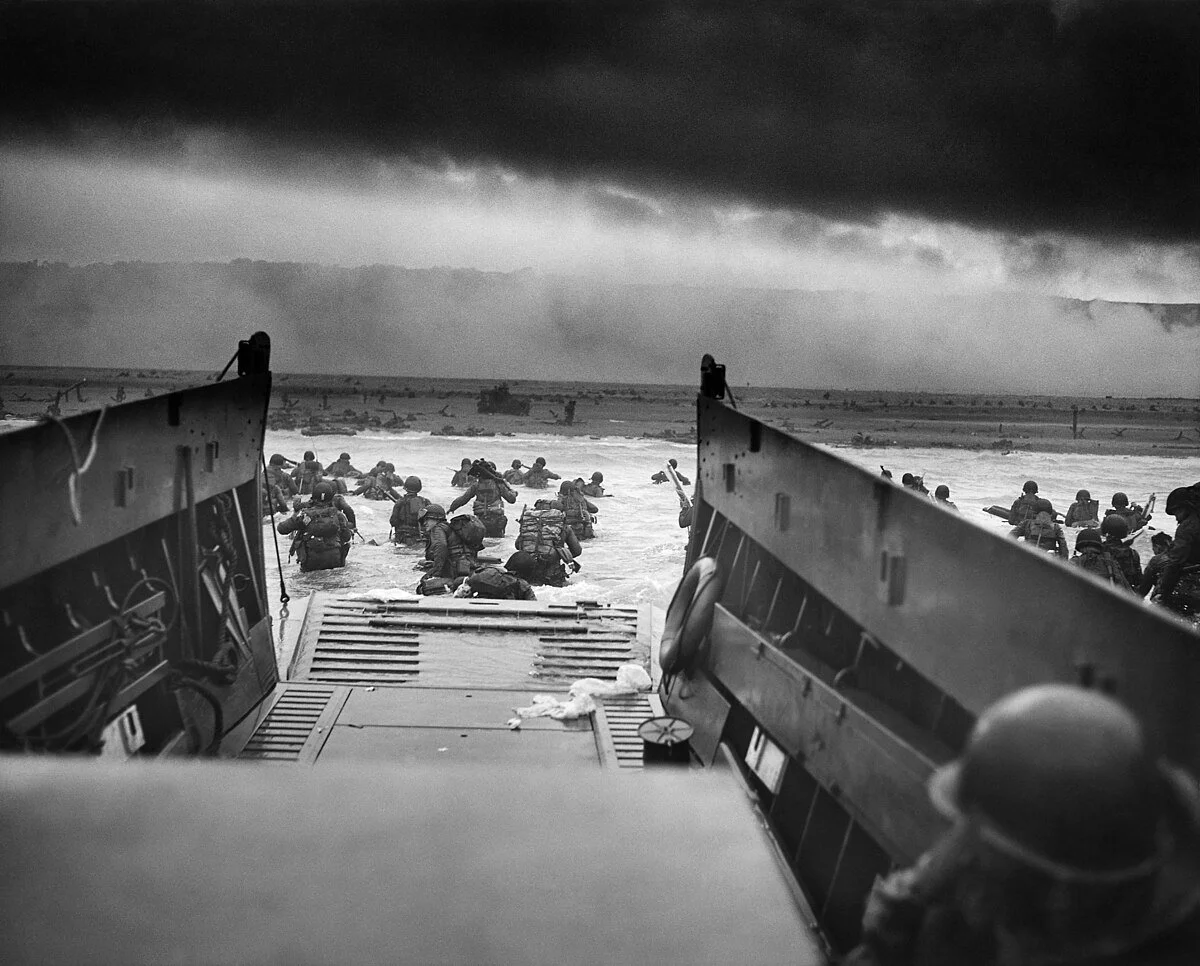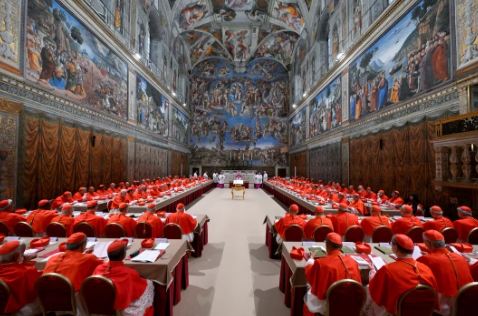The following essay is published with permission from its author, Cardinal Dominik Duka OP. The cardinal writes here of the life of Robert Prevost, now Pope Leo XIV. It is a fascinating biographical essay which encompasses the connections between Europe, North and South America and the Global Church.
An Attempt at the First Biography of Pope Leo XIV, Penned by a "Czechoslovak" Cardinal: The past six weeks I have spent a considerable part of my time outside my homeland, in order to live these days at the heart of the Church – namely, in Rome. This city, which was not only the capital of the Roman Empire that persecuted the Christian Church for three centuries, but which eventually became the home of our Church – the Latin, Western Church – bearing the name Roman Catholic. And why Roman Catholic? Because it was to this very city, the center of the empire and a symbol of worldly power, that the two most eminent apostles journeyed – Saint Peter, to whom Christ Himself entrusted the leadership of the Church, and Saint Paul, who found a new way to address those who had not grown up in the Jewish world of the Book of Books, but had been formed by Greek culture and civilization. It was precisely this Greek intellectual heritage and linguistic culture that Paul utilized to bring the Gospel closer to people and thereby connect his preaching with the new world – and we may say that it was he who forged the tools for Christianity to be received in the Roman Empire. It was they who, in Rome, through their faith, testimony, and martyrdom, laid the foundations of the Church of which we are heirs today.
This is also the reason why the Church, in the decisive moments of its life, gathers in places where these two great figures of faith rest—where they completed their earthly journey. And since I was present in Rome not only for the funeral of Pope Francis but also during the election and inauguration of the new pope—His Holiness Leo XIV—I will allow myself, even before his official biographies are published, to make one observation. As you can see, this event was not pre-planned—otherwise, the biographies would have already been prepared. And if it had been an election that was not free, but rather the result of some previously arranged pact, a kind of conspiracy or lobbying effort, the entire process would have unfolded quite differently. In the course of just a few days, we can say that we have learned much about the Pope’s childhood, his adolescence, his studies and formation, as well as about his life’s path, along which he held a number of offices and ministries. The parents of Pope Leo XIV—whose birth name is Robert Francis Prevost Martinez—are the children of immigrants who came to the United States.
Here it is necessary to emphasize—emigrants, not migrants. A migrant is a refugee, a person who often flees out of necessity and for existential reasons. The great emigration, however, represents something different. It is a distinction that must be understood—the difference between migration as we know it from ancient times, from the era of the great migrations of peoples, and the regulated emigration that took place from the European continent to the United States. It was a directed, organized emigration. From Europe, especially from its eastern regions, and partially from the territory of present-day Russia, people departed in search of a new home, a new beginning—but they did so within a certain order and legal framework. The Pope is French on his father's side and Spanish on his mother's. Yet among his grandparents—specifically his paternal grandmother—there was Italian ancestry. And so little Robert Francis, the youngest of three siblings, learned from an early age to speak English, French, Spanish, and, naturally, Italian. He was not born, as one prominent Italian journalist wrote, in New York. Nor was he born in Washington, but in Chicago—a city with a rich industrial history and a complex social structure. In Chicago, which was home to numerous communities, especially of emigrants from Central Europe—above all, Slavic emigrants.
At the time of his childhood, Chicago, along with Vienna, ranked among the two largest "Czech cities" after Prague. Yes, the Czech community was so numerous—so significant in both size and influence—that it even surpassed some cities in what was then Czechoslovakia. And during the childhood of his father, the mayor of Chicago was Mr. Antonín Čermák, originally from Bohemia. It is noteworthy that the 44th mayor of Chicago, Antonín Čermák, held office from 1931 to 1933. On February 15, 1933, when Franklin D. Roosevelt had already been elected president and was preparing to assume office, an assassination attempt was made on him during a visit to Chicago by the anarchist Giuseppe Zangara. Roosevelt escaped unharmed, but Chicago’s mayor, Antonín Čermák, died from the gunfire. It was the Czech mayor who, at that time, saved the life of the president-elect of the United States, Franklin D. Roosevelt. President Edvard Beneš was invited to the World's Fair. This was indeed a significant event, as no other country at the time received former President Beneš with such respect. Only the Soviet Union welcomed him with honors befitting a head of state. And so we must say that these are not mere coincidences. They are not isolated historical episodes.
If we look at these stories through the lens of Church history—not as a mere grafting onto political history, but as a deeper understanding of God’s presence and action in history—then we begin to see certain connections. And with them, we must also recognize certain causes. And here we may ask: why did the Pope choose the name Leo XIV? We must acknowledge that this name primarily draws upon the legacy of Pope Leo XIII, a towering figure in the Church’s history during the 19th century. He was deeply engaged with the question of workers, the question of labor. But when we speak of the "worker question," we must keep in mind that the encyclical Rerum Novarum is not merely a text about wages or the rights of laborers. No—it delves deeply into the question of the family, its dignity, and its irreplaceable role in society.
The family, as we know it and as the Church proclaims it, consists of a man and a woman. And we hear the present Pope strongly reaffirming this truth. Through this stance, he has taken the first step toward a full return to the values so clearly articulated by his predecessor, Saint John Paul II. It was he who laid the foundation for a new vision of the family as the fundamental unit of both society and the Church. The encyclical Rerum Novarum, to which Pope Leo XIV consciously refers, is not only concerned with labor rights and the dignity of the worker. It is a text that profoundly addresses questions of justice—social, cultural, and spiritual justice. And it is no coincidence that Rerum Novarum received its foundational form precisely in Bohemia, specifically in Bor near Tachov, at the château of Count Löwenstein.
It was there that leading figures of contemporary Europe—especially from the industrially advanced nations—gathered under the leadership of Cardinal Zigliara to jointly draft the fundamental theses of this groundbreaking encyclical. Emigration, especially from Eastern, Central, and Southeastern Europe, was at that time predominantly economic in nature, and was characterized above all by the movement of Slavic peoples. And it was precisely Pope Leo XIII who devoted significant attention to the fate of the Slavic nations in Central and Southern Europe. He was acutely aware of two troubling realities. On the one hand, Berlin—under the influence of German pan-Germanism—was striving not only for political dominance, but also for cultural and spiritual assimilation. To this must be added the ideological positions found in Marx and Engels’ Communist Manifesto, where we encounter openly anti-family declarations that, after 1948, even led to threats of possible genocide against Slavic nations.
On the other hand, however, Pope Leo XIII also drew attention to Russian pan-Slavism, which, although appearing at first glance to defend Slavic interests, in reality led to Russification, cultural dominance, and spiritual subjugation. And so the Pope says: some are Germanizing, others are Russifying. Some force conversion to Protestantism, others to the acceptance of Orthodoxy. In both cases, however, these are violations of the natural identity of nations—their faith and their culture. And it was precisely this reality that the Church could not and must not overlook. Thus was born the famous encyclical Grande Munus, as well as the project for establishing a major institution—the Slavic College, Slavonicum—whose purpose was to enable Slavic seminarians, often from very modest and impoverished backgrounds, to study directly in Rome. I believe that this fact must not be forgotten—and that even in it, we may find a connection with the many visits of the former Prior General of the Augustinians, Robert Prevost, to the Czech Republic, to Slovakia, and surely also to other places in our Central European region. Pope Leo XIII became the restorer of the study of the works of Saint Thomas Aquinas, particularly through the so-called Leonine Commission.
It was also he who confirmed the founding of the Angelicum College, today known as the Pontifical University of Saint Thomas Aquinas. Among its recent rectors we find the name of the Slovak Dominican, Father Konštanc Adam, Th.D., O.P. This man is a graduate of Palacký University in Olomouc, originally a member of the Czechoslovak Dominican Province, and later of the newly established Slovak Province. Pope Leo XIV, then, is a man who knows what Prague and the Augustinian monastery in Malá Strana have meant for the history of our country. This monastery had for many years cared for the German parish, and its prior, Father Schubert, gave his life as a martyr in the Dachau concentration camp—as a courageous opponent of Nazism. Pope Robert Francis also visited Brno—a city that is home to the famous Old Brno Monastery, which has left an indelible mark on history through the figure of Abbot Gregor Johann Mendel, the founder of genetics. Let us recall that even in my youth we were taught that genetics was a pseudoscience. And yet today we know that from this very place came one of the greatest scientific insights into the nature of life.
It was a monastery where musical life deeply shaped its spirituality and the beauty of the liturgy. The prominent composer Pavel Křížkovský served in the choir loft here, a teacher of none other than Leoš Janáček. And so we could continue to recall the deep spiritual, cultural, and scientific imprints the Church has left in our nation.
We may therefore rightly say that in this Pope—an American—we have a shepherd who is close to our milieu, who understands it, and who grasps it not only through facts, but through personal experience and spiritual sensitivity. This, too, draws him near to the great figures of the papal office, such as Saint John Paul II and Pope Benedict XVI.
It is certainly often emphasized that Pope Leo XIV also served in Latin America— specifically in Peru and Chile. And we must realize that Peru was for centuries the center of one of the most advanced civilizations of South America: the Inca Empire. It was there—in a land of deep culture and a spiritual tradition searching for faith—that the current pope served as a missionary, a formator, and a shepherd. That is why he learned the language of the highland Quechua peoples, whose members still celebrate the Eucharist once a month in their native tongue. This is an expression of respect for their cultural identity and spiritual heritage. But Peru is not only a land of high-altitude indigenous villages. It is also the country whose capital, Cuzco, was once the seat of the Primate of all Latin America. One can thus say that Lima became the origin of much that shaped the spiritual direction of this vast continent. It is important to recall that the spread of Christianity in Latin America did not occur simply “by fire and sword.”
Yes, it cannot be denied that blood was shed in some places. But these instances were primarily of a social, not exclusively religious, character. It was often argued that those who offer human beings as sacrifices forfeit the right to act as free citizens. And yet, in such moments, the Church rose up in defense of human dignity. Let us recall the great figure of the Dominican priest and later bishop—Bartolomé de las Casas. It was in the north, in Mexico, where his voice resounded loudly and clearly. In the royal council of Spain—the so-called Cortes—he achieved the recognition of the indigenous peoples as free subjects of the Spanish Crown. Let us acknowledge that this was a groundbreaking decision at the time. Even though their self-governance and traditional power structures were taken away, the injustice was at least partially redressed by the provision of free education. And education is one of the strongest tools for restoring human dignity.
Pope Robert Francis Prevost’s mission in Latin America instilled in him a profound awareness of the value of human freedom and the inherent dignity of every person. It is worth recalling that while slavery was abolished relatively early in Latin America, the United States reached that point only three centuries later. It is therefore essential to recognize that Latin America is not only a continent burdened by social and economic inequality. It is also a space that has offered humanity a particular path: "a vision of global coexistence founded on justice, solidarity, and human rights." And here, the voice of the Renaissance thinker Francisco de Vitoria, O.P.—one of the founders of international law—resonates even today. His words still speak to us: “No one is born a slave.” These words must lead us to deep reflection, for even in our time we witness new forms of slavery. We witness human trafficking, sexual exploitation, and so-called surrogate motherhood, where not only bodies but even unborn children are treated as commodities.
And so we must honestly ask ourselves: “Can we truly speak of living in a century of free and fully economically autonomous human beings?” These, then, are the challenges the Church faces today—and with her, Pope Leo XIV. Nevertheless, I would like to recall one more human dimension of the Pope’s story. The Pope is at an age when a person—after sixty-five years of life—more often returns in memory to childhood and youth. Not because he lacks the strength to look toward the future, but because age itself brings certain limitations. And at the same time, these memories become a source of inspiration. For youth and childhood do not lose their value; rather, they become, in a certain sense, a spiritual endowment—a source of joy, inner peace, and wisdom. The father of Pope Leo XIV, Louis Prévost, was a naval officer in the United States Navy during the Second World War. He took part in the D-Day landings in Normandy and continued in the liberation of France, particularly in the military ports of Toulon and Marseille.
This wartime epic did not remain merely a record in a military chronicle, but left a deep imprint on his heart. And we can be certain that he spoke of these events to his sons— and that they listened—in silence, with reverence and admiration. One of these sons, Louis Martin Prévost, himself became a sailor; it was he who embraced his brother, the Pope, during the inauguration Mass. Today, he lives in Florida. The Pope’s mother was Spanish. We could say she was a librarian—although we do not know precisely whether that means she managed a library or perhaps a bookshop. But what matters is something else: it was she who opened the path to priesthood for young Robert Francis— the future pope. It was his mother who showed him how great the dignity of the priestly vocation is—how deep the meaning of a ministry is that is not merely a function, but a life’s mission. And we may say that it was from her upbringing, her faith, and her personal witness that the man who now bears the name Leo XIV emerged. It was she who taught him how to pray. She had gone through the school of prayer for her husband—to return from the war. I believe these are truths that each of us can understand—and perhaps especially we, as priests. When we speak today about the role and mission of women in the Church, we must recall this quiet, yet essential moment: when a mother offers her child, her son, for the service of the priesthood. Just as we know it from the Old Testament.
It is a phenomenon which—I dare say—is painfully lacking in today’s Church. And so I believe one thing, and I can say it with certainty: that the election of the Pope was in no way manipulated. Not only do I believe it—I know it. And I would like to warn everyone to classify films that depict conclaves and the inner workings of the papal palace as scenes of tension and intrigue rather in the category of romantic horror fiction—or simple slander. We had the opportunity to return from this extraordinary moment together with Archbishop Mons. Josef Nuzík, Archbishop of Olomouc, Metropolitan, and President of the Czech Bishops’ Conference, as well as with Bishop Mons. Jan Vokál, Bishop of Hradec Králové— my successor—and with members of our secretariat, namely Michal Šafranek. And although it was at times demanding and tiring for me, as the senior member of this delegation, it was above all—and I emphasize this—deeply joyful. Because we were able to witness moments that hold meaning not only for today, but also for the future of the Church.







